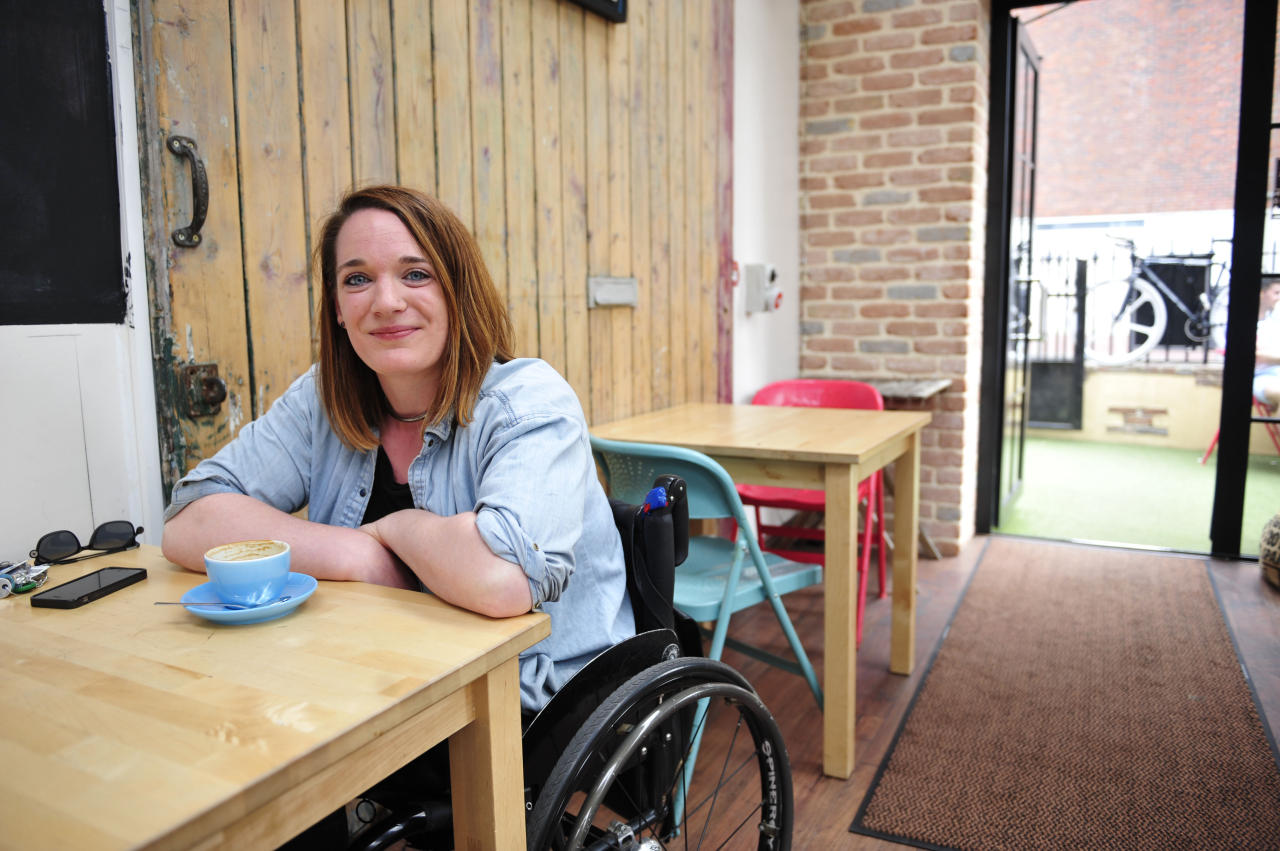Can access apps make cities wheelchair-friendly?

By Louise Bruton
The Irish Times, Ireland
“An access app must be easy to use and it should provide relevant information,” says Matt McCann, chief executive and founder of Access Earth, an Irish-made access app. “The app needs to keep pace with innovation. Technology has opened so many doors by improving accessibility and we want to be at the forefront of that.”
For wheelchair users and others living with a disability, map-based apps for access – to restaurants, bathrooms, parking and other public buildings and services – seem like an obvious solution to navigating new places. So why does it feel like existing apps are lagging behind if you are mildly tech-savvy and have local knowledge on your side?
I’m in a wheelchair for life but for one day only, I am acting as a tourist in my own town – to see if technology and crowd-sourced information can make my day easier. My plan is to get from own my front door in to Dublin’s city centre, stopping for coffee somewhere along the way, and using four online services as my guides: the Danish-made WheelMate app; the German-made WheelMap; the Access Earth app; and the Irish website Mobility Mojo. All of them are map-based and review-generated.
When I log into Access Earth, it tells me that my nearest location is a convenience store that has been closed for the last 10 years, immediately making me doubt its reliability. I wander through the inner Dublin suburbs of Rathmines and Portobello, about two kilometres from the city centre, and the majority of shops and restaurants are marked on the map, but none are reviewed.
I move onto WheelMap. Here, everything is clearly marked on the map, from sports grounds to supermarkets, bars to barbers and pharmacies to fast food joints but when I click in, there are no reviews. Its mapping software is more precise but it just doesn’t have the information to back it up.
I test out WheelMate, an app that lets wheelchair users around the world locate wheelchair-accessible toilets and parking spaces, but they include the occasional business that’s been reviewed by users. “We’re sorry, it looks like we haven’t collected any locations in this area.”
In all of County Dublin, an area of more than 900 sq. km and 1.3 million people, WheelMate has just 16 marked disabled parking bays, accessible toilets and reviewed businesses.
I try a different tactic with Mobility Mojo. I search for car parking near Trinity College Dublin – the university in the city centre and a key tourist location – and the first three parking options are located in Malahide, a 33-minute drive from the city centre. I never get my coffee in the end.
Ireland’s Census of Population 2016 shows that the country’s population stood at 4,761,865 in April 2016 and 13.5 per cent of that figure has a disability. In Europe alone, over 50 million people live with a disability and according to the European Network for Accessible Tourism, an estimated 130 million people would benefit from accessible tourism, potentially making access apps an essential tool for any disabled traveller.
I ask Janice Valentine, the founder of Hack Access Dublin, an annual event organized by a group of tech and design experts to foster inclusion and accessibility in the city, what developers need to do to make this kind of tech useful for locals and tourists. “Without a doubt it requires lots of multidisciplinary collaboration, and this requires different groups talking to each other,” she says.
“I think anyone looking to solve a particular aspect of the accessibility challenge needs to take a broad view of the system and how their solution fits into it. Any competition or overlapping with other start-ups should either be viewed as a partnership opportunity or a reason to pivot to another aspect of the challenge.”
The format of these apps could change the lives of disabled people but by depending on user reviews to function, the apps I reviewed lack enough content to be reliable. However, compared to most capital cities, Dublin has two advantages when it comes to access; it’s small, therefore easy to navigate, and two of our public transport services - Dublin Bus and the Luas tram lines - are 100% wheelchair accessible.
For this wheelchair user, it seems clear that existing developers need to collaborate rather than compete with each other, because every time a new map-based access app pops up, we’re presented with a clear slate in providing access information. If there was a concentrated effort made by the developers to gather as much information and data as they can on Dublin’s access, it would not take long for the perfect access app to arrive.
Our smartphones can give us the answers to almost everything but with access apps, the answers can’t come from the users alone.
